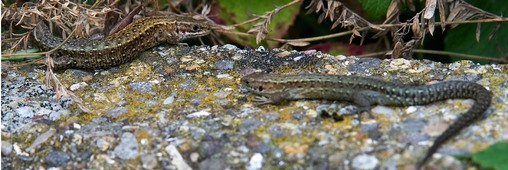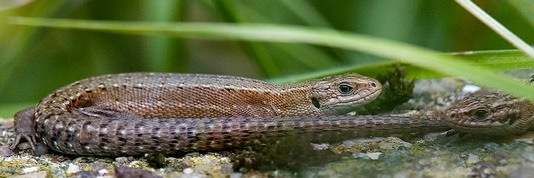

Biodiversity
Action
Plan

Conservation of reptile priority species
Grass Snake and Common Lizard are present in some numbers in Barnsley and the sites with good populations deserve conservation.
Reasons for decline and loss of reptile populations
- Declines in habitat availability due to agricultural intensification, afforestation, development and reclamation.
- Reptile sites may be destroyed unknowingly if there are insufficient records or the potential of brownfield and other sites for reptiles is not recognised.
- Inappropriate habitat management including burning of heather moorland, overgrazing, excessive mowing and shading by tree planting.
- Over-tidying, such as removal of rubble, earth and debris piles, removes basking and over-wintering sites
- Reptiles that bask in the open are intolerant of disturbance and may suffer from increased public access to sites.
- Habitat fragmentation and isolation of populations.
The Amphibian and Reptile Conservation Trust provides comprehensive information on reptiles: arc-trust.org/
Reptile Habitat Management and
The National Amphibian and Reptile Recording Scheme provides general information as well as surveys: narrs.org.uk
Froglife, a conservation charity including reptiles provide advice and information: froglife.org
Legal protection
Reptiles - Grass Snake, Common Lizard, Slow-worm and Adder - are protected under part of Section 9(1) of the Wildlife and Countryside Act 1981 (as amended) against intentional killing and injuring.
Reptiles are also protected under Section 9(5) of the Wildlife and Countryside Act 1981 (as amended) against selling, offering or exposing for sale, or having in possession or transporting for the purpose of sale.
There are also general controls relating to animal welfare. .
As Section 41 species all reptiles including Grass Snake and Common Lizard need to be taken into consideration by any public body in managing their estate.
Good Practice Habitat management for reptiles
Reptiles need adequate areas for foraging with sufficiently large populations of prey species, south-facing banks or bare earth or stones where reptiles can bask and warm up in the sun, shelter for resting and protection from predators, and suitable hibernation sites.
These features are often reduced through intensive mowing, over-grazing, burning (accidental or deliberate), or intensive recreational use.
Grass Snakes also need water and damp areas (prey includes amphibians). Sites for egg-laying (e.g. compost/dung heaps) are also important.
- Maintain or create habitat features for foraging, sheltering and hibernation, and where reptiles can warm up in the sun. (See above)
- In gardens, compost heaps, log piles, rockeries, and some areas with longer grass, can benefit reptiles.
- Avoid mowing or burning large areas of ground. Where mowing or burning is taking place take precautions to avoid reptiles being harmed.
- Enable sites supporting reptiles to be linked by wildlife corridors.
Reptiles conservation
